
Handmade culture in Georgia: how traditional crafts are contributing to the economy
Georgian folk craftsmen are transforming traditional crafts into a source of economic income with the support of an EU-financed project.
Heritage crafts as a source of income
Culture is a source of inclusive growth and job creation and the global trade in creative products has continued to expand in recent years, despite economic uncertainty. Cultural heritage is a universal value, an important expression of cultural diversity – that is why preserving it and passing it on to future generations is so important.
According to Nino Samvelidze, Programme Manager for Youth, Culture and Digital Society at the EU Delegation to Georgia, cultural diversity is one of the main values of the EU, and this is why it aims to support the preservation and development of cultural traditions of different countries.
Having realised this, the EU has announced 2018 as the European Year of Cultural Heritage. In this article, we showcase the stories of Georgian craftsmen participating in the EU-supported project “Folk Crafts Perspectives in Georgia”. Thanks to the project’s support, the craftsmen develop and grow their enterprises, pass on their expertise to others, so that heritage crafts can become a source of income in Georgia.
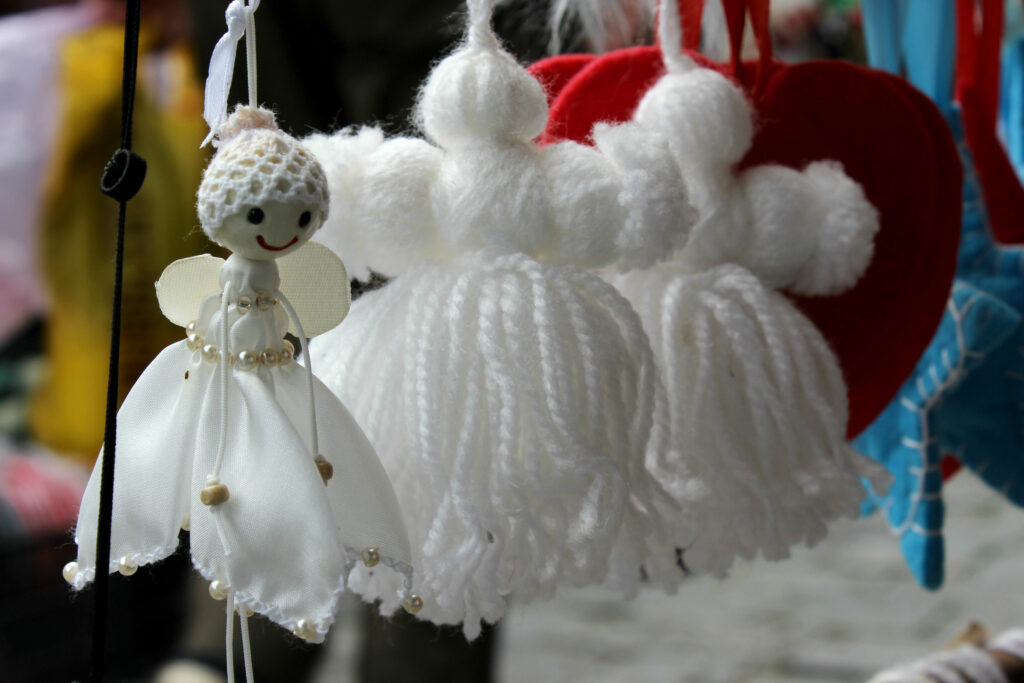 Wool toys made in Lali Sadaghashvili’s worksop “Nerbi”. Mtskheta, Mtskheta municipality
Wool toys made in Lali Sadaghashvili’s worksop “Nerbi”. Mtskheta, Mtskheta municipality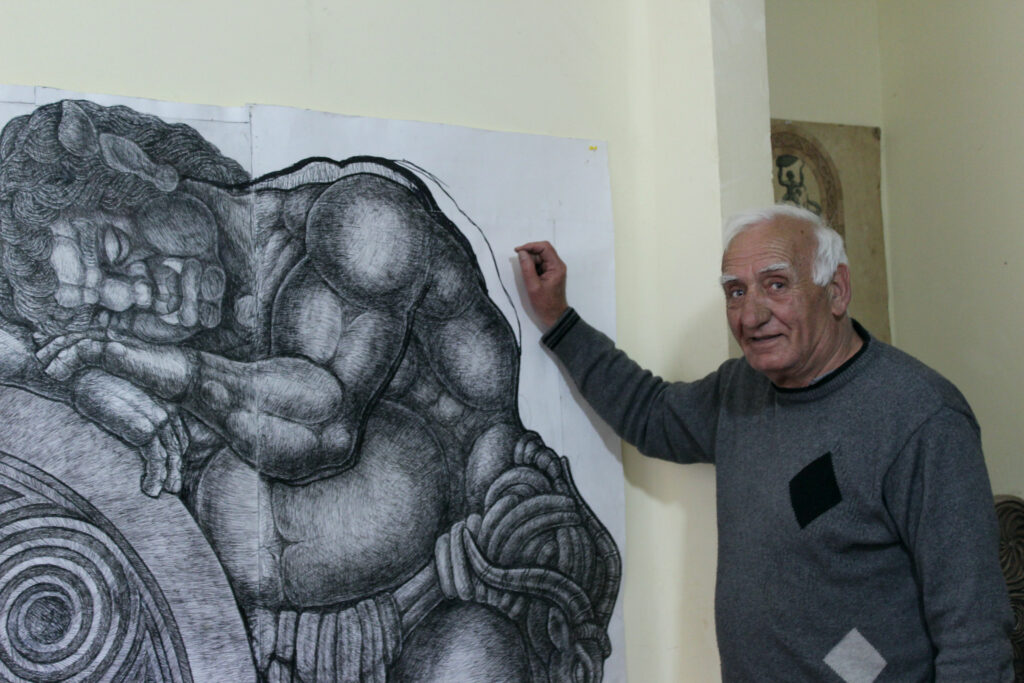 Bidzina Snoveli, Member of Snoveli Art Studio
Bidzina Snoveli, Member of Snoveli Art Studio
“It is important that work in heritage crafts, which is rather widespread in our country, becomes a source of income and employment, and this is one of the objectives of the project,” explains Nino.
The Georgian Arts and Culture Centre selected 21 art studios to provide with funding. The total budget was €617,128, with €489,168 coming from the EU. The Head of the Centre, Maka Dvalishvili believes that successful beneficiaries had to have an interest in and potential for development. One of the requirements to receive funding was that the beneficiary must teach their skill to at least five students.
“Our main goal is to preserve traditional Georgian crafts and to adapt them to modern market requirements, i.e. by transforming the craft into a business. Overall, this gives economic benefit,” explains Maka.
Maka, an art historian, says the culture of craftsmanship is widespread across Georgia. She says the main characteristic of folk craftsmanship is that the products must be handmade and not manufactured in a factory. Some parts may be factory-supplied, but they have to be finished by hand.
“Folk craftsmanship started when mankind created stone tools, carved patterns on stone and developed aesthetic vision,” explains Maka.
The Georgian Arts and Culture Centre has been working towards the development of heritage crafts since its establishment in 1995. Maka says that, since that period, craftsmen have received support to develop quality and design, and to study the market.
In 2012, in cooperation with the EU in the framework of the EU-Eastern Partnership Culture and Creativity Programme, the Georgian Arts and Culture Centre implemented another project – Strengthening Creative Industries in Armenia, Azerbaijan and Georgia: Heritage Crafts – Common Platform for Development.
Apart from workshops and seminars, the programme also conducted a study of 500 experts in heritage crafts. The results of the study highlighted the current situation of the heritage crafts market, and a strategy was developed based on the results.
 Capreolus depicted on the wooden headboard. Snoveli Art Studio, Village Sno, Kazbegi municipality
Capreolus depicted on the wooden headboard. Snoveli Art Studio, Village Sno, Kazbegi municipality
Lali Sadaghashvili: Felt craft
About 20 km northwest of Tbilisi in the historic town of Mtskheta, near the Svetitskhoveli Cathedral (a UNESCO World Heritage Site), a variety of stalls can be found selling a vast array of products. Among them is Lali Sadaghashvili’s stall, where she sells woollen toys and other handcrafted products.
On display at Lali’s stall you can find woollen toys, felt scarf, hand knitted shoes, wool jewellery and various other accessories – all handmade by her and her family. Lali sells her handcrafted products to the constant stream of tourists who walk past the stalls each day.
In the evening, when the flow of tourists declines, Lali returns home. If she is not too tired, she continues working in the studio set up on the ground floor of her house. This is where Lali’s enterprise, Nerbi, is based. If Lali is unable to work, her three children and spouse work to provide her with new items for the stall.
In Lali’s studio, there is one large table with a tap nearby to supply the water required for felt production. There are shelves installed on the wall in the room, with all the necessary materials and fabric, as well as a sewing machine and a wool felting iron.
Lali and her husband, Rasula Kevkhishvili, set up the enterprise in 2014, after they received EU funding from the Folk Crafts Perspective in Georgia project. They received 8000 GEL in funding, which they used to completely renovate the room and to purchase the table, chairs and necessary equipment. Lali, who has been working with wool for 16 years, says the project funding helped her to fulfil her lifelong aspiration.
“It is not an exaggeration, I fulfilled my dream. I always wanted to have a studio I would enter and forget everything, where I would have a table and I could work,” says Lali Sadaghashvili.
Lali used to work in the railway industry as a telecommunications specialist. She started to use her craftsmanship skills when she was made redundant. Today, handicrafts provide her main source of income.
“I remember at first when I earned 14 GEL, then 44 GEL, and it went on gradually. Initially, I was focused on toys, but now I see that hand knitted shoes also sell well,” says Lali.
At first, Lali’s spouse, Rasula, did not consider felt craft as a serious business, but over the course of time, he changed his mind. Now, he also works in the enterprise alongside his job in the railway industry.
“My wife used to talk about what she could make from wool but I was not really interested. I thought it was just a hobby and I was too busy with my work. Finally, she persuaded me to get involved and it turned into a family business,” says Rasula.
Felt is one of the oldest methods of creating and processing fabric. It is a traditional Georgian folk craft which attracts huge interest from tourists to the country. For this reason, Nerbi also provides workshops for tourists. Wet felting was one of the most recent masterclasses held for a group of tourists. The studio that was set up through EU support enables Lali to demonstrate the process of her work to tourists.
Lali also gives classes in Mtskheta gymnasium on how to make various items from wool. Through the EU project, she is responsible for teaching five students. She says that in four years she has already taught 16 students.
The support received through the EU project has empowered Lali, and she now has a monthly income of 1500 GEL. She hopes to open a shop in the historic part of Mtskheta and hire a shop assistant in the future.
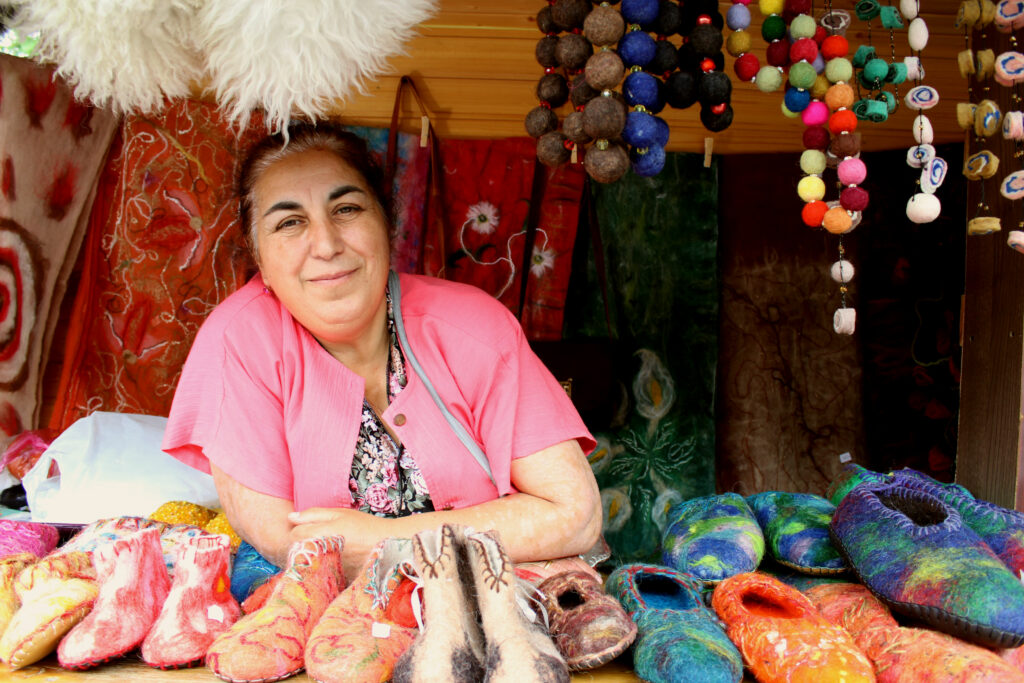 Feltmaster Lali Sadaghashvili inside of her rack selling felt slippers made at her worksop “Nerbi” at old town Mtskheta
Feltmaster Lali Sadaghashvili inside of her rack selling felt slippers made at her worksop “Nerbi” at old town Mtskheta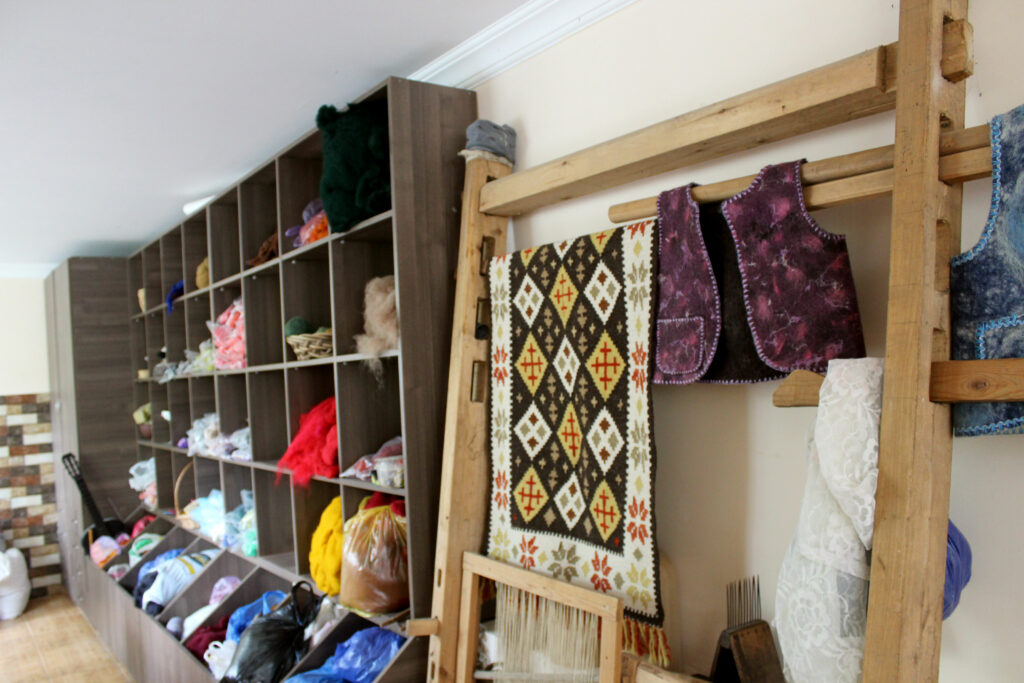 Curtain and felt waistcoat inside the workshop “Nerbi”, Mtskheta
Curtain and felt waistcoat inside the workshop “Nerbi”, Mtskheta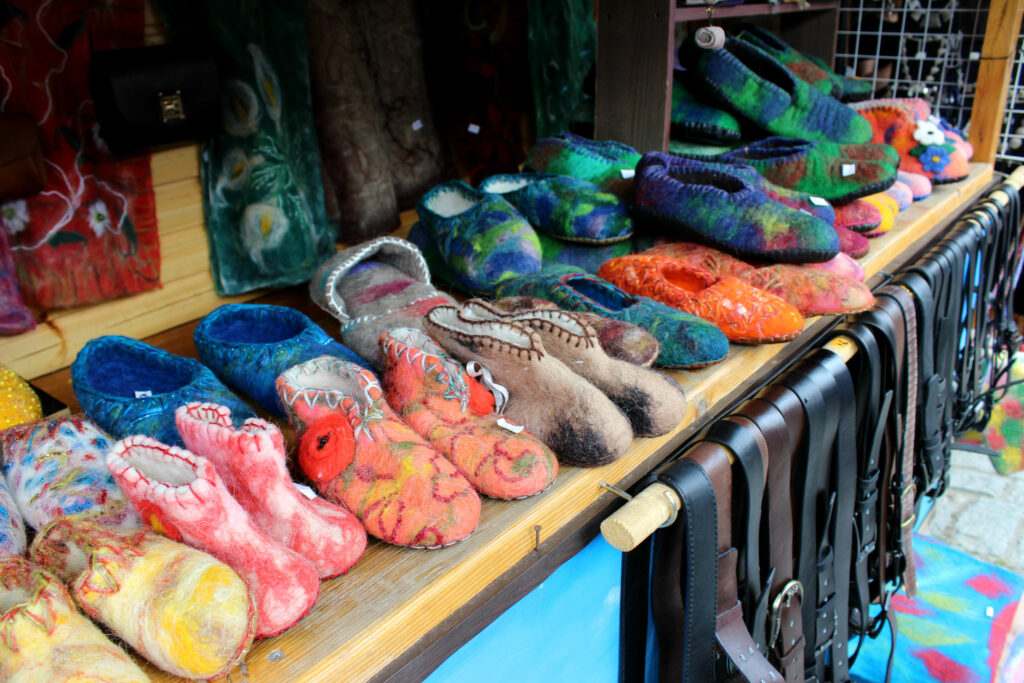 felt slippers made at Lali Sadaghashvili’s worksop “Nerbi” at old town in Mtskheta
felt slippers made at Lali Sadaghashvili’s worksop “Nerbi” at old town in Mtskheta Feltmaster Lali Sadaghashvili in front of her rack in old town of Mtskheta
Feltmaster Lali Sadaghashvili in front of her rack in old town of Mtskheta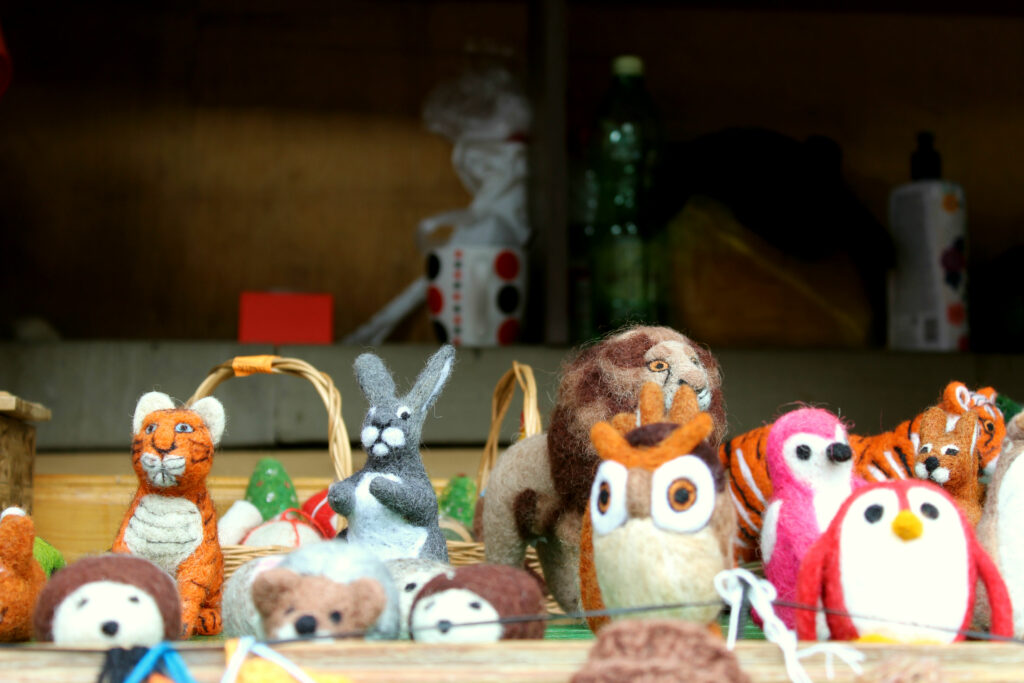 Wool toys made by Lali Sadaghashvili, Mtskheta
Wool toys made by Lali Sadaghashvili, Mtskheta
Otar Sharabidze: Pottery
Otar Sharabidze is one of the expert folk craftsmen who received funding from the EU. The 67-year-old ceramicist currently lives about 60km southwest of Tbilisi, in Tetritsqaro.
Otar studied ceramics 40 years ago at the Tbilisi Academy of Arts. After graduating, he worked in different factories within the former Soviet Union and created production sketches. He has been working independently since the 1990s. In 1996, Otar went to Istanbul where he taught at one of the universities. In 2014, he returned to Georgia where he settled in Tetritsqaro. He bought a house which was built in the nineteenth century in the historic part of the city, and now he plans to host pottery classes for tourists there.
Otar told us that he bought a house with a yard especially to facilitate his work. He plans to set up a studio and accommodation in the house so that he can rent out two rooms to ceramicists and other interested people and work together with them.
Otar’s yard measures 1 500 m2 and provides the ideal place for his studio, which is 30m2. Water supply, electric and natural gas pottery kilns, a pottery wheel and other necessary equipment will be installed in the studio.
Otar brought an electric kiln by bus from Turkey and purchased the pottery wheel and gas kiln through EU funding. He says that having both gas and electric kilns will help him diversify his work.
The ceramicist says that with a gas oven he can make products using the Raku technique, which involves removing the piece from the hot kiln, putting it into leaves or wood dust, and covering it. This process creates a glaze on the pottery.
Otar says that his pottery is not only decorative; it also has a practical function. He says that each piece he creates is unique and is never repeated.
“I produce only one copy, I always try to create original work. This is typical of folk craft; new items are made all the time. Pottery is one of the oldest forms of art, and it is developing constantly. It is interesting to look at old ceramics but you also want to introduce something new,” Otar insists.
Otar says he will complete the renovation of the house in a month, and then will start work teaching pottery and hosting holidaymakers in Tetritsqaro.
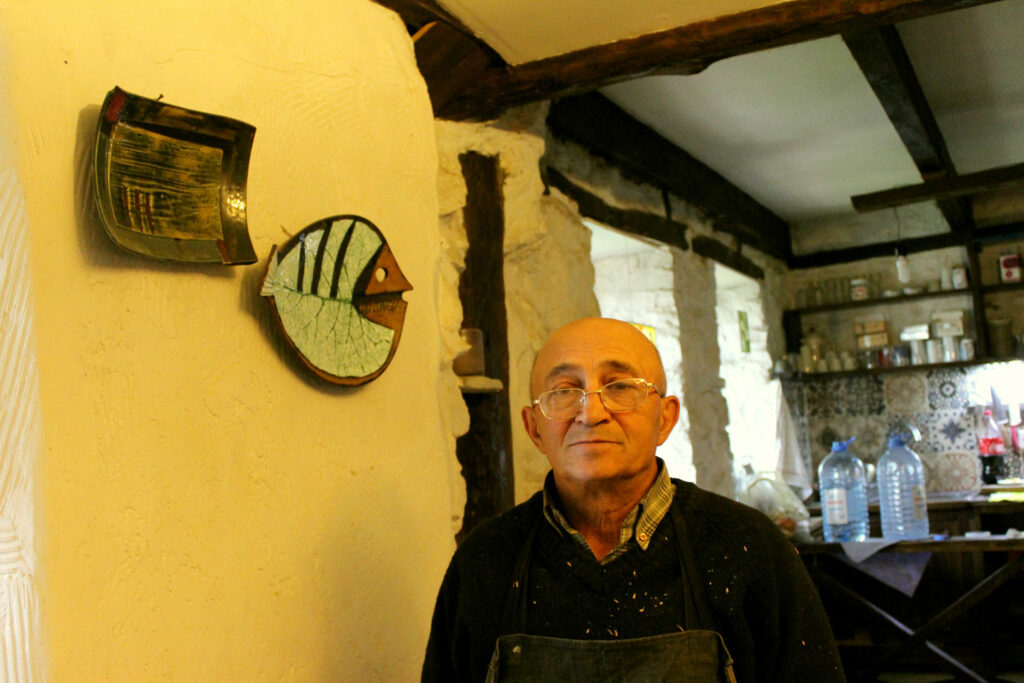 Ceramist Otar Sharabidze his pottery works on the background in his house in Tetritskaro
Ceramist Otar Sharabidze his pottery works on the background in his house in Tetritskaro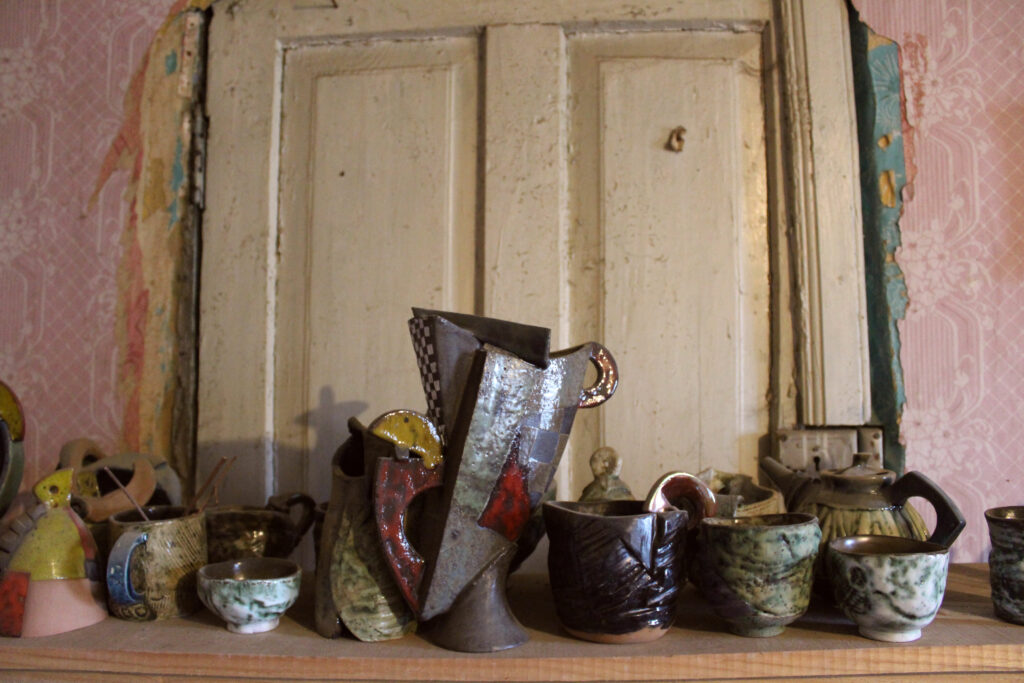 Works of Otar Sharabidze
Works of Otar Sharabidze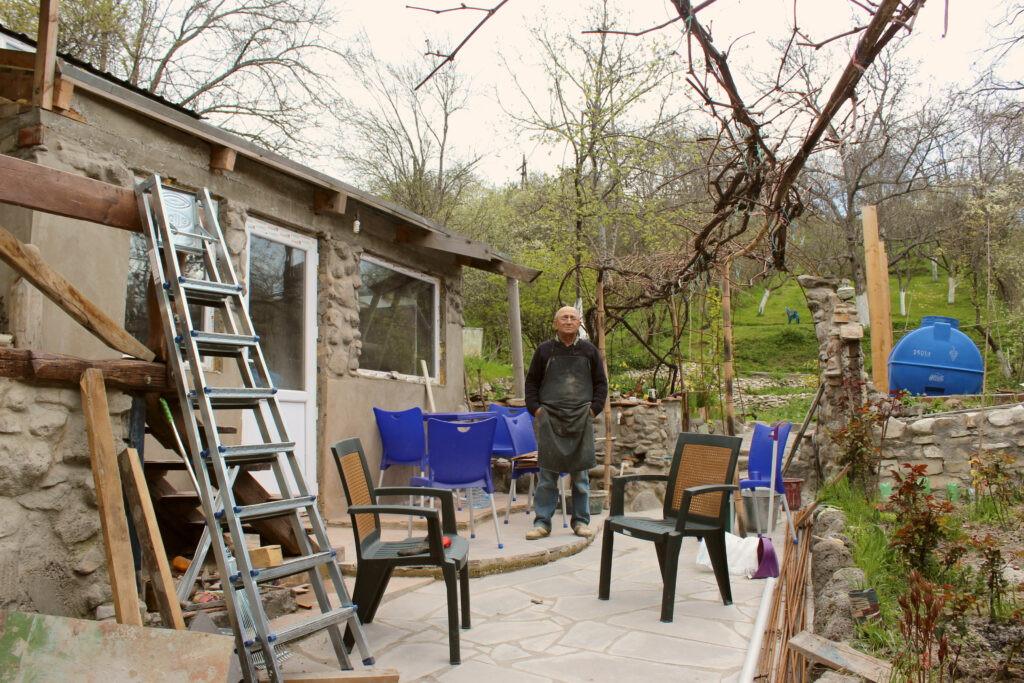 Otar Sharabidze in his yard in Tetritskaro
Otar Sharabidze in his yard in Tetritskaro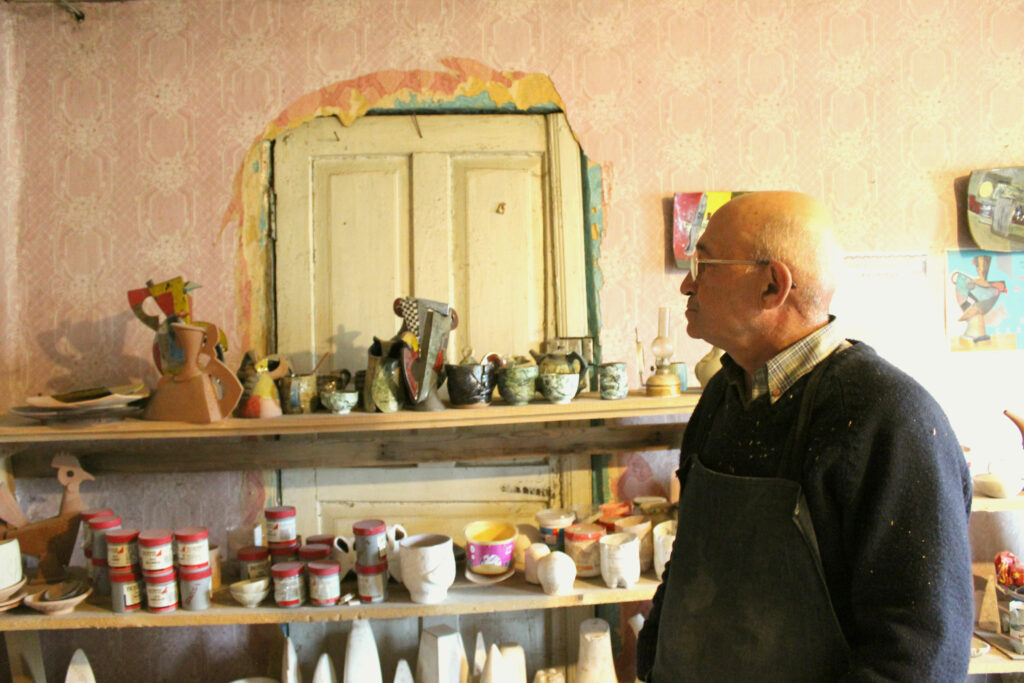 Otar Sharabidze looking at his ceramic works
Otar Sharabidze looking at his ceramic works
Art Studio Snoveli, Kazbegi
Art Studio Snoveli was established by father and son Bidzina Snoveli (73 years old) and Mindia Ghudushauri (43 years old), in the village of Sno in the mountainous region of Kazbegi. Together they make wooden armchairs, tables, beds, and carve the furniture by hand.
Mindia was born in Tbilisi, but his father was in born Sno. Bidzina, a qualified architect, left Sno after graduating from university, and studied woodwork in Makhachkala. “My father wanted to pass on his expertise to others. He has a very skilled technique; he only works by hand,” says Mindia. Bidzina says that he had talented students, but as his sales are not yet stable he cannot employ them.
The father and son set up Art Studio Snoveli in 2015 and bought the initial necessary materials through funding from the Children’s and Youth Support Fund. Then, through support from the project Folk Crafts Perspectives in Georgia, they purchased various woodwork tools and printed booklets in three languages: Georgian, English and Russian.
“The booklet is like a business card for our studio, you can show it to people wherever you go,” says Mindia.
Mindia wants to set up an exhibition space in Sno where they could receive guests and display the items produced in the studio. The furniture made by Snoveli contains carvings representing peacocks, griffins, turtledoves, bulls, the Borjgali symbol, various geometric shapes from different regions of Georgia, and figures from Georgian mythology.
Fourth grade student Saba Sabauri (8 years old) attends Sno School, located next to the Snoveli studio. He tells us that after classes he comes to the studio and learns to draw. After drawing, he will study woodwork.
“I mainly draw mountains and churches. Mountains are beautiful. My sister studied drawing; she would hang her drawings once she had finished them. I wanted to draw beautiful pictures as well, so I started to learn. I would also like to study wood burning,” says Saba.
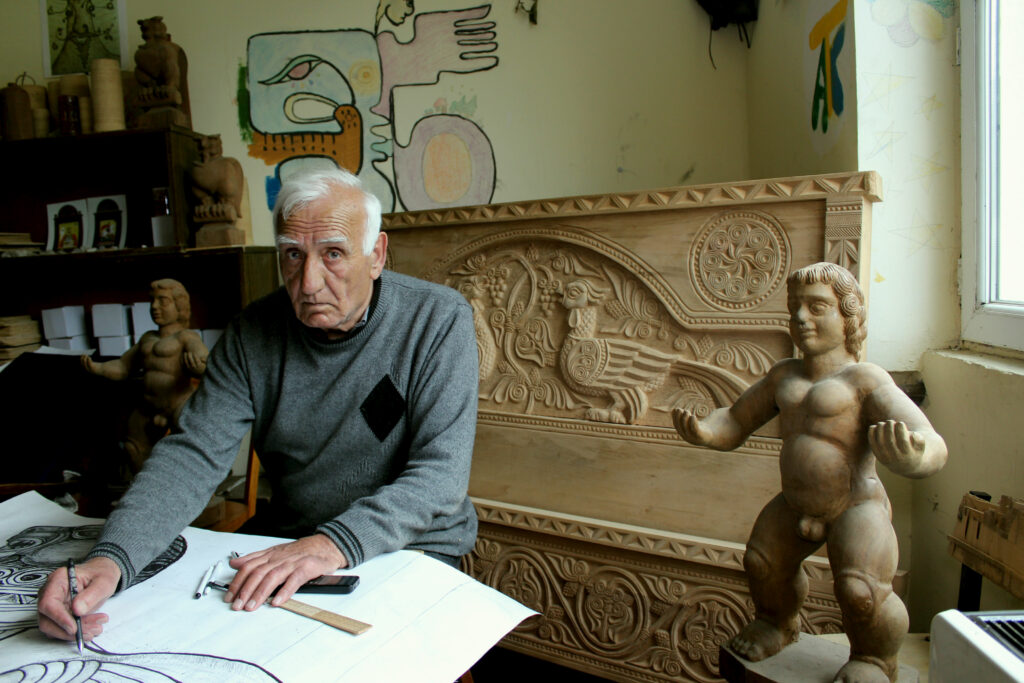 Bidzina Snoveli, Member of Snoveli Art Studio. Village Sno, Kazbegi municipality
Bidzina Snoveli, Member of Snoveli Art Studio. Village Sno, Kazbegi municipality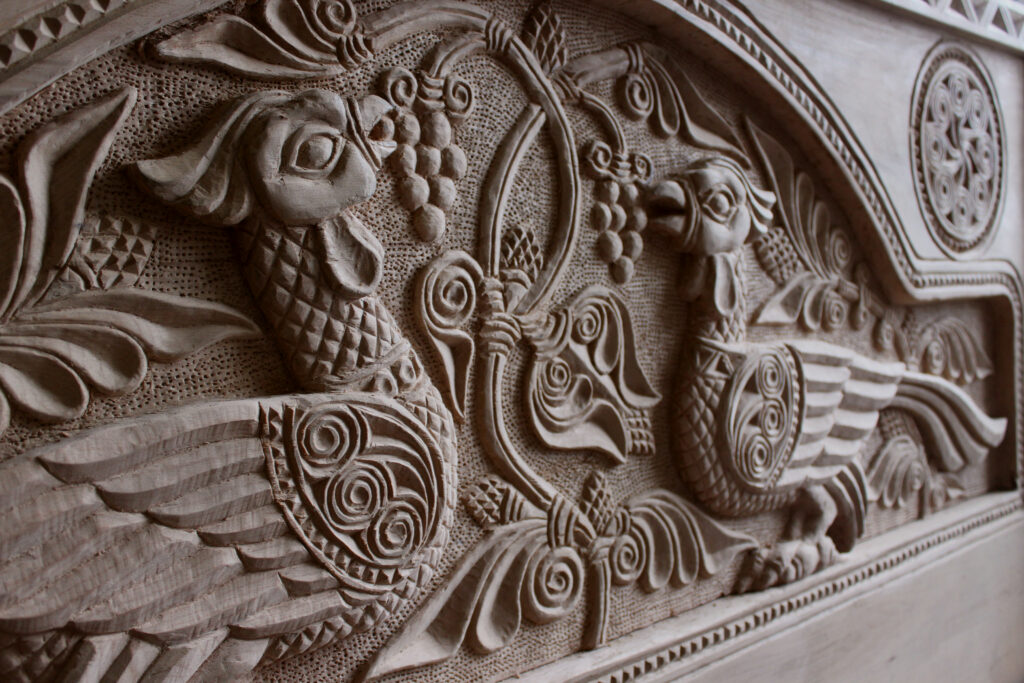 Two wooden peafowls depicted on the headboard, Snoveli Art Studio
Two wooden peafowls depicted on the headboard, Snoveli Art Studio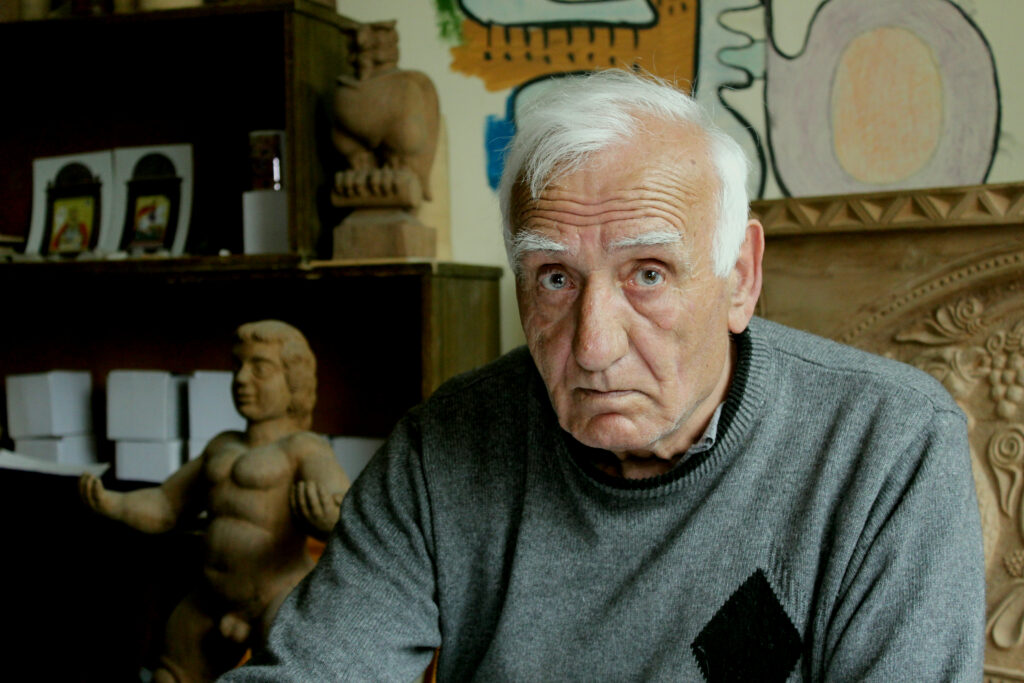 Bidzina Snoveli, Member of Snoveli Art Studio
Bidzina Snoveli, Member of Snoveli Art Studio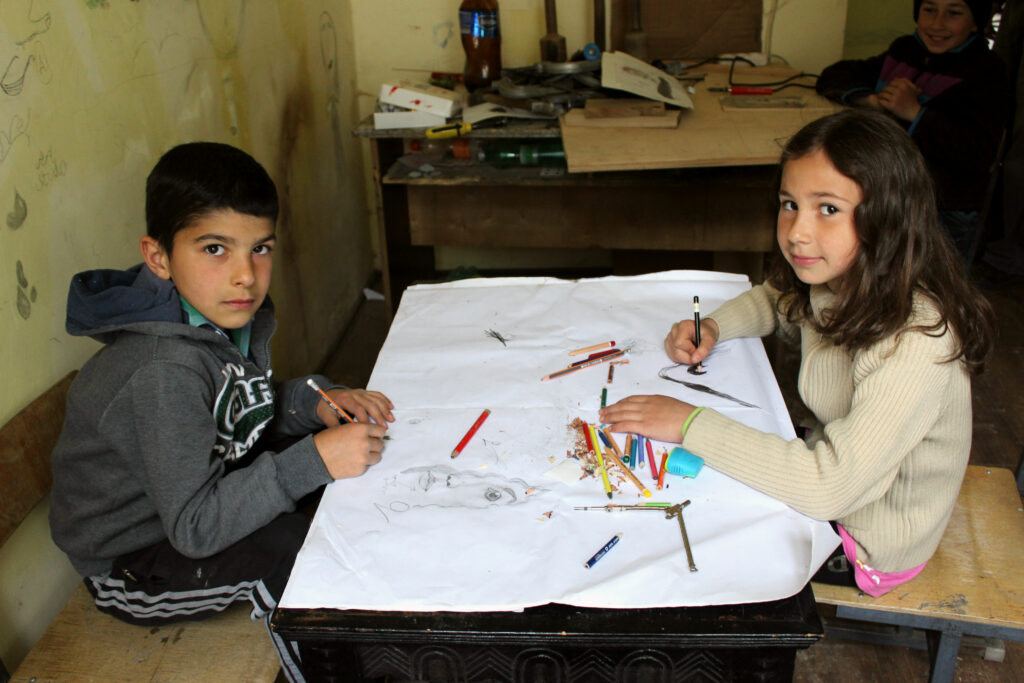 Saba Sabauri (left) and Ketevan Akiashvili (right) apprentices of Snoveli Art Studio
Saba Sabauri (left) and Ketevan Akiashvili (right) apprentices of Snoveli Art Studio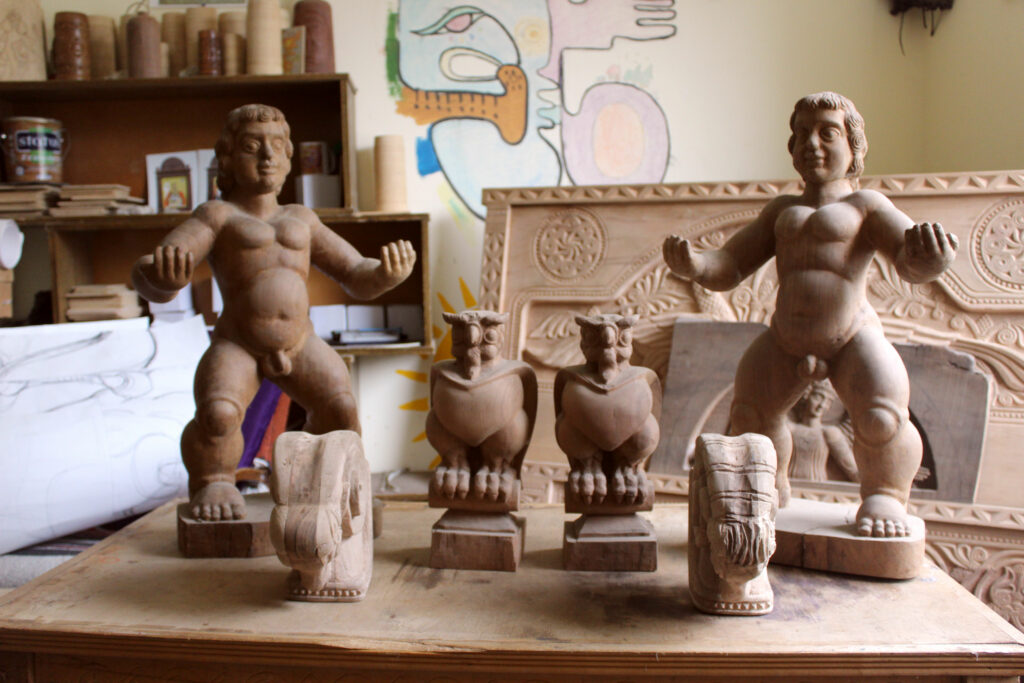 Wooden statues made in Snoveli Art Studio
Wooden statues made in Snoveli Art Studio
Keti Akiashvili (also aged 8) is another of Mindia’s students. Keti also attends the drawing classes and looks forward to starting to work on wood instead of a paper. “I learned how to draw villages and animals; how to create lines and shadows,” says Keti.
According to an EU-supported study in 2014, 1500 people were employed in the heritage crafts industry in Georgia. This accounts for 0.07% of the economically active population. 84% of the respondents worked on their own, while 16% hired employees.
Their main challenge now is to adapt heritage crafts to modern market requirements to enable them to benefit financially from the crafts.
Author: Misha Meparishvili
Article published in Georgian by Netgazeti.ge
MOST READ
SEE ALSO
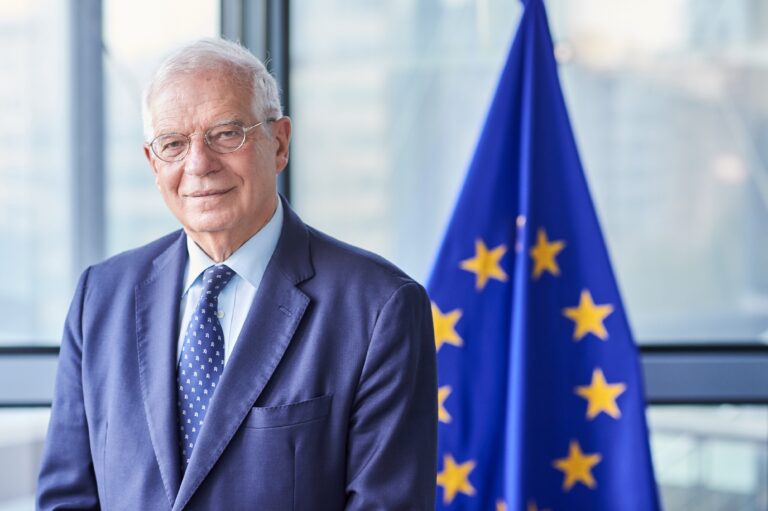
No, time is not on Russia‘s side
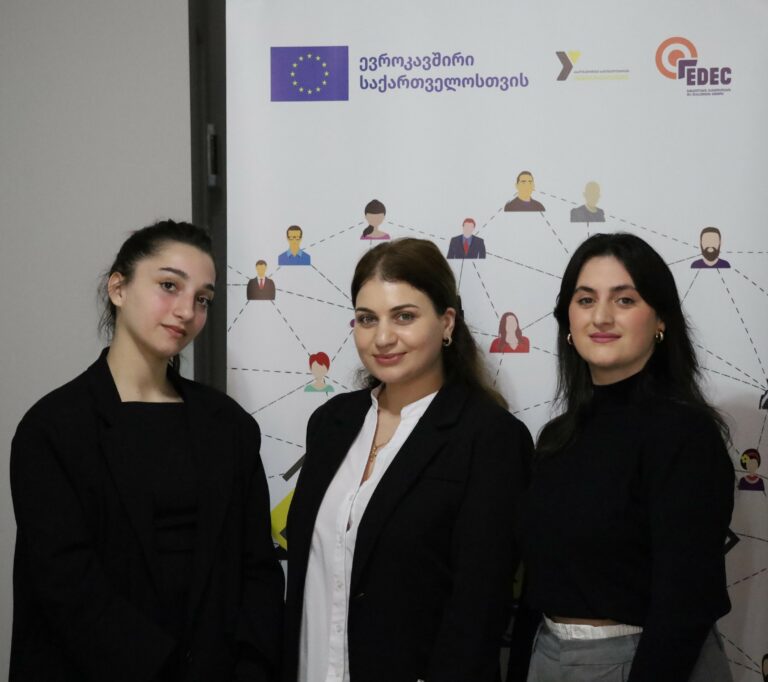
A hands-on approach to boost youth employment in Georgia
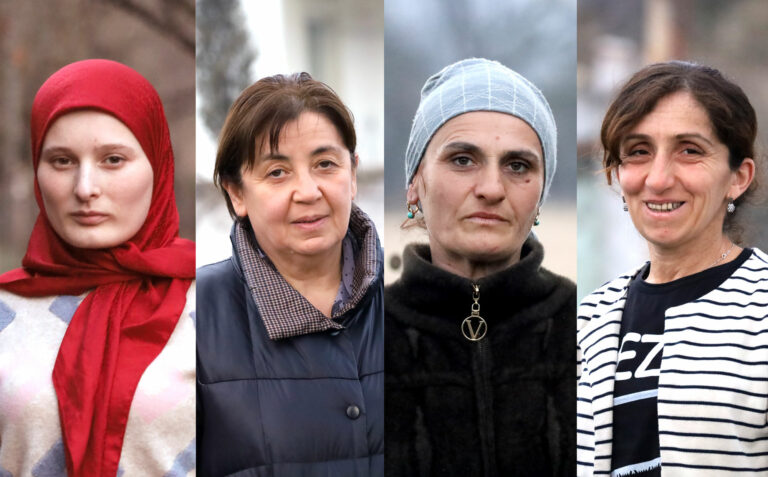
Taking health into their own hands: women’s empowerment in the remote villages of Georgia

A woman publisher in a male-dominated industry – the path to a big dream

Be one step ahead of a hacker: check simple cybersecurity tips!
More campaign pages:
Interested in the latest news and opportunities?
This website is managed by the EU-funded Regional Communication Programme for the Eastern Neighbourhood ('EU NEIGHBOURS east’), which complements and supports the communication of the Delegations of the European Union in the Eastern partner countries, and works under the guidance of the European Commission’s Directorate-General for Neighbourhood Policy and Enlargement Negotiations, and the European External Action Service. EU NEIGHBOURS east is implemented by a GOPA PACE-led consortium. It is part of the larger Neighbourhood Communication Programme (2020-2024) for the EU's Eastern and Southern Neighbourhood, which also includes 'EU NEIGHBOURS south’ project that runs the EU Neighbours portal.

The information on this site is subject to a Disclaimer and Protection of personal data. © European Union,







